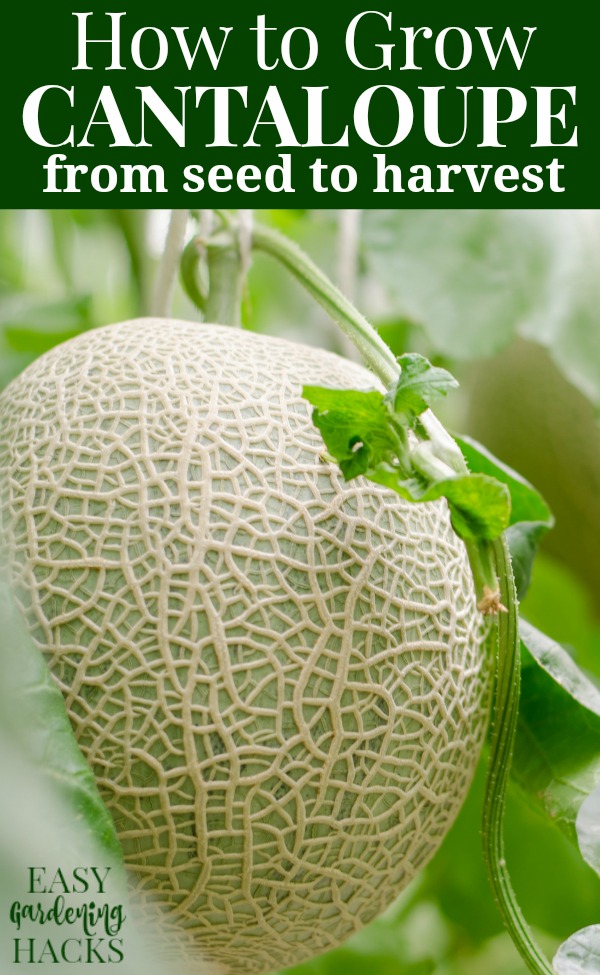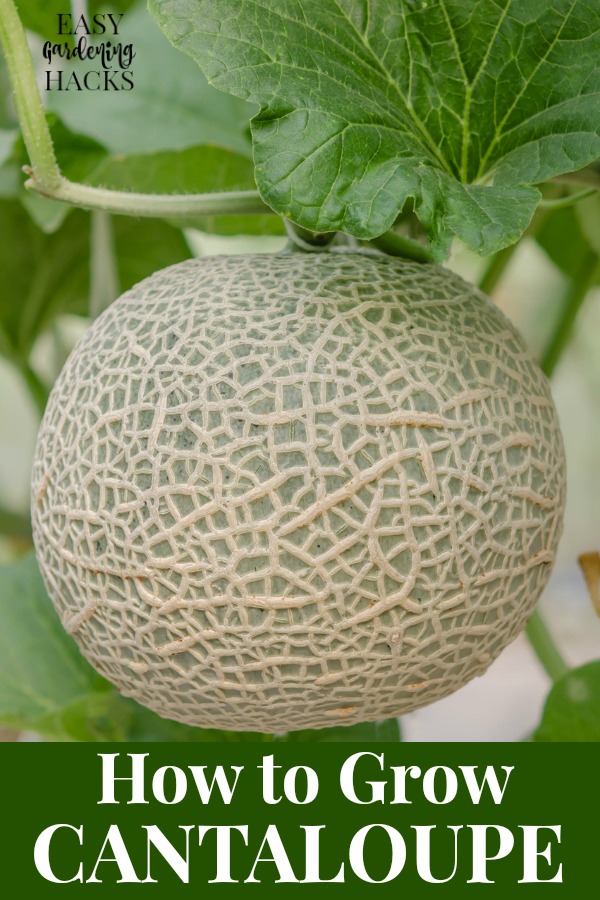Use these tips on how to grow cantaloupe and add this delicious fruit to your garden this summer.

Did you know that the cantaloupe that we eat here in the US is not really cantaloupe by definition? It is more commonly a muskmelon, but we call it a cantaloupe. In any case, they are fun to grow in a warm-weather environment, and in the end, come harvest, you will have a beautiful melon to make into salads or just enjoy right off the rind.
How to Grow Cantaloupe
Here are some tips for starting cantaloupe seeds indoors and out, transplanting cantaloupe seedlings, and harvesting cantaloupe.
How to Start Cantaloupe Seeds Indoors
Starting cantaloupe seeds indoors is a great option for you if spring is slow to warm. You will want to start them indoors about 1 month before you plan on transplanting them outside. To start them, you will grow in a seed starting tray, with seed starting mix soil and place them about ½ inc deep into the soil. Keeping the temperature above 75 degrees is important for germination so you may need to use some products and tricks to do so. Find out more info about growing cantaloupe from seed with this post.
How to Start Cantaloupe Seeds Outdoors
If you live in an area that is warm, you can start cantaloupe seeds outdoors easily. When the danger of frost has passed and the soil is at least 70 degrees, sow cantaloupe seeds about 1 inch deep into nutrient-rich soil. Space plants about 24 inches or more apart, on the side and on the top and bottom. If you need to add nutrients, mix in some compost before planting. Water, but do not soak the soil. Here are more tips for starting cantaloupe from seeds.
How to Transplant Cantaloupe Seedlings
Transplanting seedlings that you grew inside requires first creating a good soil environment with lots of nutrients. This can be achieved by adding compost and mixing it in. Handling the seedlings must be done with care for the best outcome. Find more helpful information on how to transplant cantaloupe seedlings here. Here are more tips for how to transplant Cantaloupe seedlings.
How To Keep Pests away from Cantaloupe
Two of your biggest pests will come in the form of aphids and cucumber beetles; both of which can eat up your plant’s leaves and leave them open for disease. Aphids are easy to deal with and look like little green bugs. They just need a quick blast from a garden hose when you see them.
Cucumber beetles are a bit trickier but can be dealt with by covering your seedlings with row covers or even using a mini vacuum to suck them up if you see them. To know what to look for, you can identify them by looking for beetles that are yellow with black stripes down the back in adults and green with dots in immature beetles. You can find more information on dealing with cucumber beetles in this post from The Farmer’s Almanac.

How to Harvest Cantaloupe
Knowing how to harvest cantaloupe is mostly about knowing when to pick for ripeness. This is mostly checked in two ways; the color of the rind and the stem.
To check for ultimate ripeness, you will see the rind go from green to a tan color, consistently. You will also want to see if the rind is cracking near the top where the stem is attached to the plant. Try to remove the fruit. Does it come easily? Your melon is likely ready! Just don’t wait until they fall off by themselves because that will indicate you may have waited too long and they are overripe.

Leave a Reply